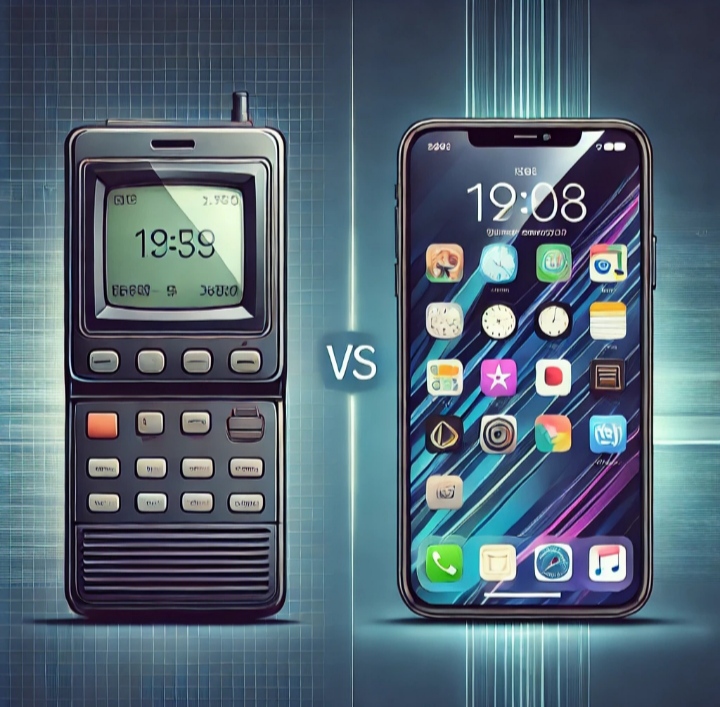Smartphones have evolved rapidly over the years, offering cutting-edge features, better performance, and sleek designs. But does that mean older smartphones are completely outdated? Not necessarily! While the latest smartphones boast advanced technology, old smartphones still hold their ground in many ways.In this article, we’ll compare old smartphones vs. the latest smartphones to help you decide which one suits your needs better.1. Durability & Build QualityOld Smartphones: Many older phones were built with stronger materials, such as metal or durable plastic. Devices like the Nokia Lumia or early iPhones had sturdy designs that could withstand accidental drops.Latest Smartphones: Modern smartphones prioritize aesthetics, using glass backs and slim designs. While they look premium, they are more fragile and often require protective cases.✅ Winner: Old smartphones (if durability is your priority).2. Performance & SpeedOld Smartphones: Older devices may slow down over time due to outdated processors and limited RAM. Newer apps also demand more power, making it harder for old phones to keep up.Latest Smartphones: The newest phones come with high-performance processors (e.g., Snapdragon, Apple A-series, MediaTek Dimensity) and larger RAM capacities, ensuring smooth multitasking and gaming.✅ Winner: Latest smartphones (for better speed and performance).3. Battery LifeOld Smartphones: Many older phones had better battery endurance, thanks to less power-hungry processors and smaller screens. However, battery degradation over time is a concern.Latest Smartphones: Modern phones have larger batteries and faster charging, but power-hungry features (5G, high refresh rate displays) can drain them quickly.✅ Winner: Depends on usage – older phones were great for basic tasks, but newer ones charge faster.4. Software & Security UpdatesOld Smartphones: Older phones eventually stop receiving software updates, making them vulnerable to security threats and missing out on new features.Latest Smartphones: Regular updates, security patches, and AI enhancements make new phones more secure and efficient.✅ Winner: Latest smartphones (for security and long-term usability).5. Features & InnovationOld Smartphones: Older devices had practical features like headphone jacks, expandable storage, and physical fingerprint scanners.Latest Smartphones: The newest devices introduce cutting-edge technology, including foldable displays, AI-powered cameras, under-display fingerprint sensors, and 5G connectivity.✅ Winner: Latest smartphones (if you want new technology).6. Camera QualityOld Smartphones: Older phone cameras were decent, but they lacked AI enhancements, night mode, and computational photography.Latest Smartphones: Modern smartphones feature high-megapixel sensors, AI-assisted photography, better low-light performance, and multiple lenses (ultrawide, telephoto, periscope zoom).✅ Winner: Latest smartphones (for better photography and videography).7. Price & Value for MoneyOld Smartphones: If you’re on a budget, an older flagship phone can offer great performance at a lower price than a new mid-range phone.Latest Smartphones: New phones come at a premium, but they offer better longevity, resale value, and cutting-edge features.✅ Winner: Old smartphones (if you want affordability) & Latest smartphones (for future-proofing).Final Verdict: Which One Should You Choose?Choose an old smartphone if you want durability, affordability, and essential features without spending too much.Choose a latest smartphone if you need top performance, new features, better cameras, and long-term software support.Ultimately, the best choice depends on your needs and budget. If you’re happy with the basics, an older smartphone might still serve you well. But if you love new tech and want the best performance, upgrading to a new smartphone is a smart move!What’s your choice? Do you prefer old or latest smartphones? Let us know in the comments!
Top Categories
- AI (63)
- Blog (6)
- C# (6)
- Cloud Computing (7)
- Computer Fundemental (4)
- PHP (1)

Leave a Reply